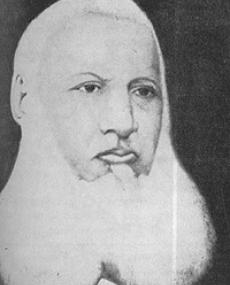
Jan Gerritze Bantjes was born in Graaff-Reinet district. He was a member of Voortrekker leader Jacob de Clercq's group who arrived at Blesberg, in the present-day Orange Free State, during the Great Trek in 1837. He was appointed secretary to the provisional Voortrekker administration which had been elected just before his arrival at the Vet River. On occasion he acted as Clerk to the Natal Volksraad, and on being appointed secretary to Comdt.-Gen. Andries Pretorius, he kept the Journal of the 'Winkommando', a document which is now of historical importance. His most important legacy is the manuscript of the treaty between Piet Retief and Zulu King Dingane in his handwriting. Bantjes also served the Voortrekkers in a teaching capacity, and the later presidents Paul Kruger and Marthinus Wessel Pretorius received their first education from him.
He died in Potchefstroom in the house of his eldest son. The Bantjes Gold Mine is named after this son, Jan Gerritze (1843-1914), a prospector who claimed that he was the discoverer of the main reef on the Witwatersrand and who also made an abortive attempt to trace the so-called Bantjes millions, a reputed Dutch legacy.